Wondering what wild camping and boondocking are? Follow this beginner’s guide for everything you need to know.
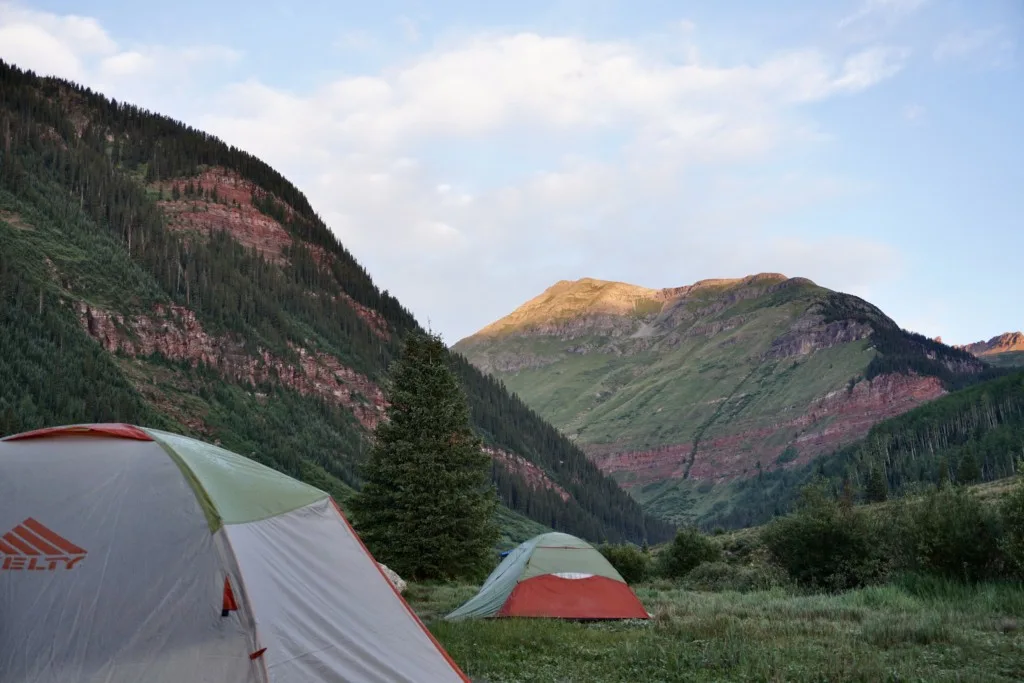
What Is Wild Camping?
Wild Camping is the act of camping outside of campgrounds and without any facilities like bathrooms, electricity, showers, etc. It goes by many names depending on who you’re talking to: primitive camping, boondocking, wild camping, dispersed camping, free camping, dry camping, etc.
But no matter what you call it, people everywhere have discovered the joy of wild camping. But you may be thinking “why would anyone choose camping with less comforts and facilities?”
Well, for starters, wild camping is usually free, which is a huge perk for lots of people. And the other huge benefit is that places that allow wild camping are often in beautiful, remote places. So instead of being in a crowded campground, people enjoy the peaceful privacy and solitude of camping without any close neighbors.
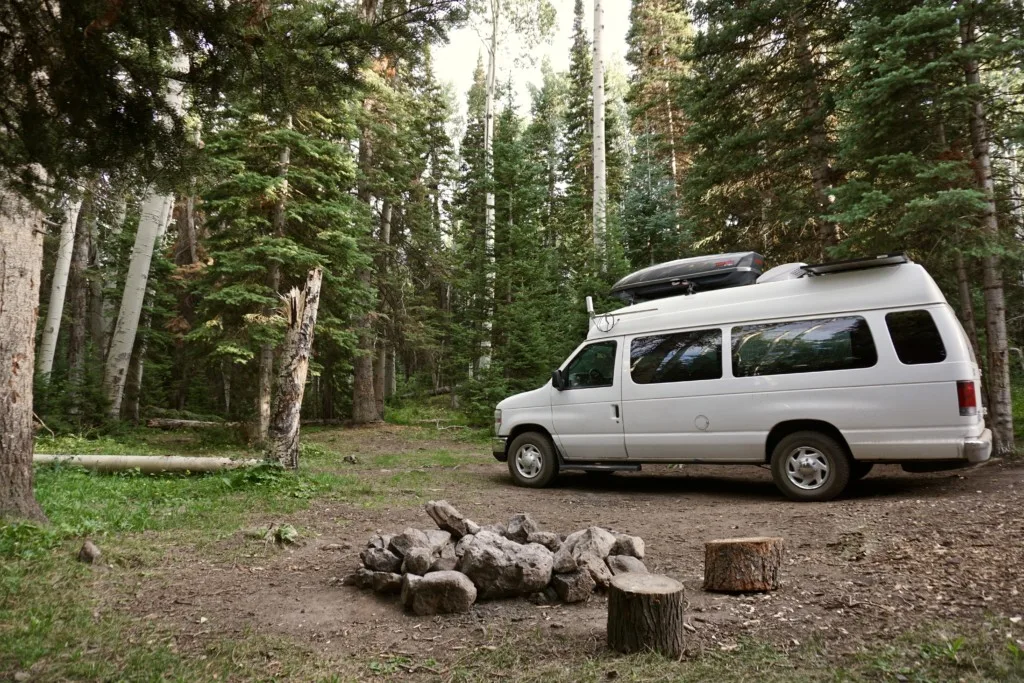
But if the concept is still foreign to you, you probably have some questions. Let’s cover the basics.
Who Is Wild Camping And Boondocking For?
Anyone. Nature doesn’t discriminate who is allowed to partake. But it’s often outdoor enthusiasts, hikers, mountain bikers, nature lovers, hunters, fishermen, photographers, etc.
What?
Camping, either in a tent, car, campervan, RV, travel-trailer, etc. But no matter your shelter, you will be living with only what you bring. Besides a fire pit, there are rarely any facilities.
When?
Wild Camping and boondocking is for anytime you want to escape civilization for a break and enjoy nature. But it’s definitely more popular during the warmer months when being outside is more comfortable.
Where Can You Wild Camp & Boondock?
Any place that allows it. Usually, government agencies like the Bureau of Land Management (BLM) or US Forest Service have sanctioned certain areas to allow dispersed camping for free. Generally, there is a lot more BLM land in the Western United States, but there’s still some in the East.
Why Would You Go Wild Camping or Boondocking?
A camping trip, road trip, or any other adventure out in nature. Or simply a free place to rest your head for the night. The privacy and solitude of wild camping and boondocking is a unique joy!

Table Of Contents
1. Difference Between Wild Camping and Boondocking
2. Rules to Follow
3. Safety and Access
4. How To Find Campsites
5. Preparation
1. Wild Camping versus Boondocking
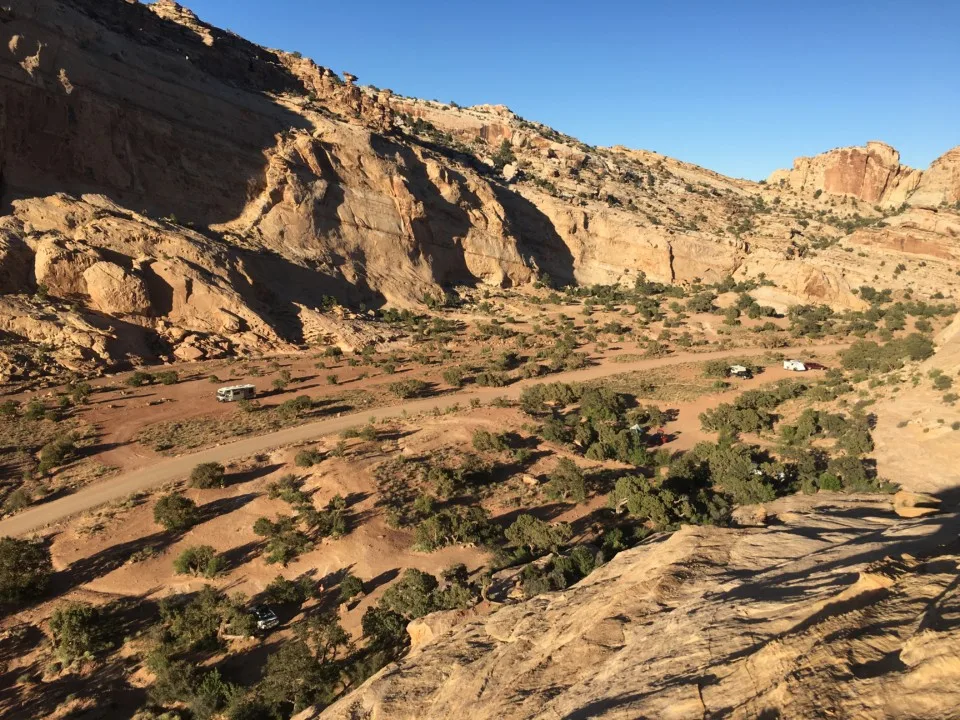
While these terms may be used interchangeably, generally Boondocking refers to RVers camping without any hookups (electricity, water, sewage), while Wild Camping usually refers to tent campers who are not camping in an established campground. So both activities can be happening in the same place at the same time, but just under different names.
2. Rules to Follow When Wild Camping and Boondocking
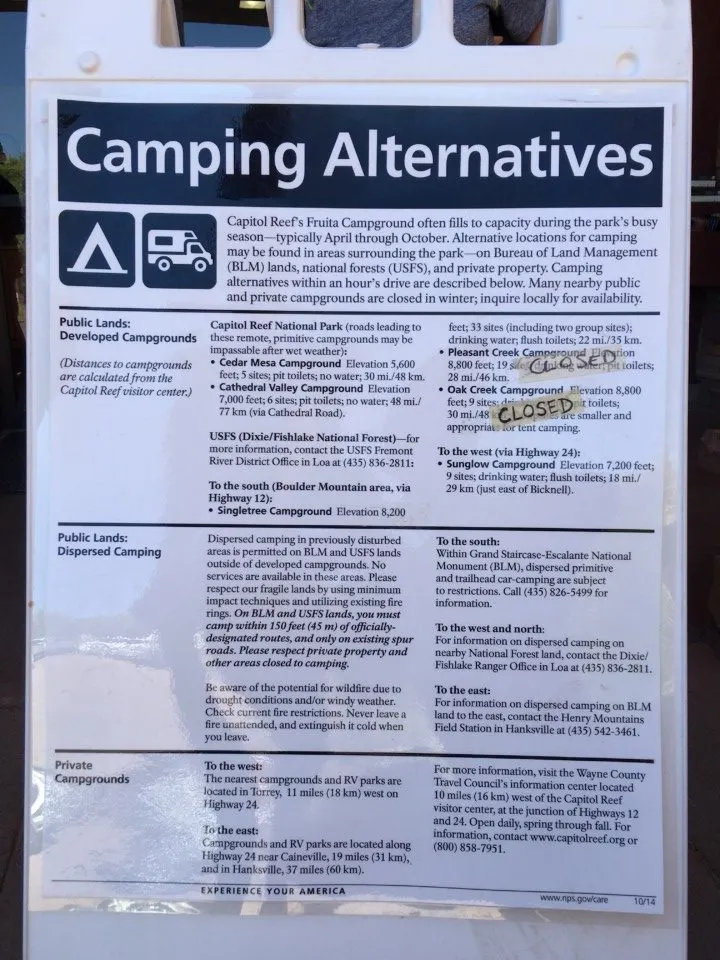
But no matter how you choose to camp, everyone is expected to follow certain rules. It’s a shared resource, so we all share the responsibility to take care of it.
Some areas that allow dispersed camping will have signs at the beginning of the road. But oftentimes they don’t. For the most accurate local rules and information, it’s always best to contact the local ranger station. Or visit the US Forest Service Website or the Bureau of Land Management (BLM) Website.
Most places that allow dispersed camping have little to no employees. So there is no magical fairy that comes through to clean up after people. And occasionally US Forest Service Rangers will come through to enforce the rules, but oftentimes they don’t have the labor hours to patrol everything.
But a good rule of thumb is to leave everything how you found it (or better). Your goal is to leave no trace (LNT) that you were ever there.
Leave No Trace
The Leave No Trace principles are like the 10 Commandments of treating the earth with respect. They are a guide to inform people how to behave to minimize their impacts and ensure that the land is protected and preserved.
Everyone should read the expanded version of each principle so that they can be good stewards of the environment. It is critical to follow these rules, because when they are broken, wild animals can be harmed, beautiful places trashed, and certain areas may be closed to wild camping and boondocking.
Travel and Camp on Durable Surfaces
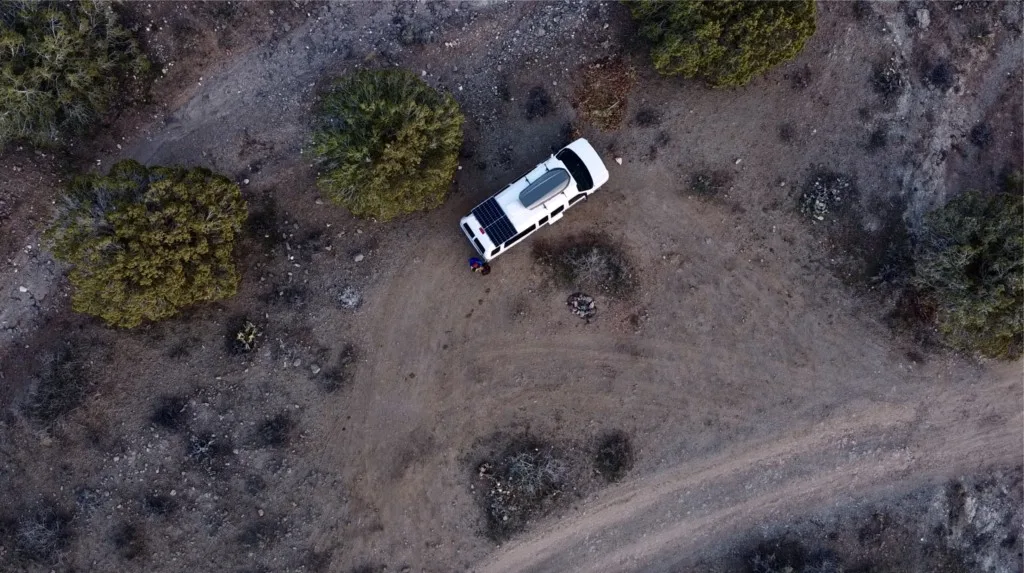
While every LNT principle is important, “Travel and Camp on Durable Surfaces” is an especially important one for informing where you make camp. While there aren’t normally numbered campsites like at a campground, it is important to camp at informal campsites that already exist.
Generally, you should look for “established” campsites. The main clues are obvious pull-offs that have little to no vegetation and maybe a fire ring. That is your cue that the land is “durable” and that people have camped there before. Always try to camp in these established campsites. The best campsites are found, not made.
If everyone were to make camp in a new place, then the land would be nothing but campsites, and vegetation would be trampled upon all over the place. This also applies to where you walk and drive. Make sure you only drive on established roads and walk/hike on established trails.
There are exceptions to this rule, however. Some environments are relatively resilient to being trampled or crushed. It certain places, forest rangers encourage people to vary the location of their tents. Some vegetation, like wild grasses and weeds are robust enough that they can withstand intermittent camping. So rather than having everyone tenting in the same spots and killing vegetation in those spots, the vegetation survives better when people spread out more.
Again, this is very location dependent, so it’s good to educate yourself on the local rules and guidelines for wild camping and boondocking.
Minimize Campfire Impacts
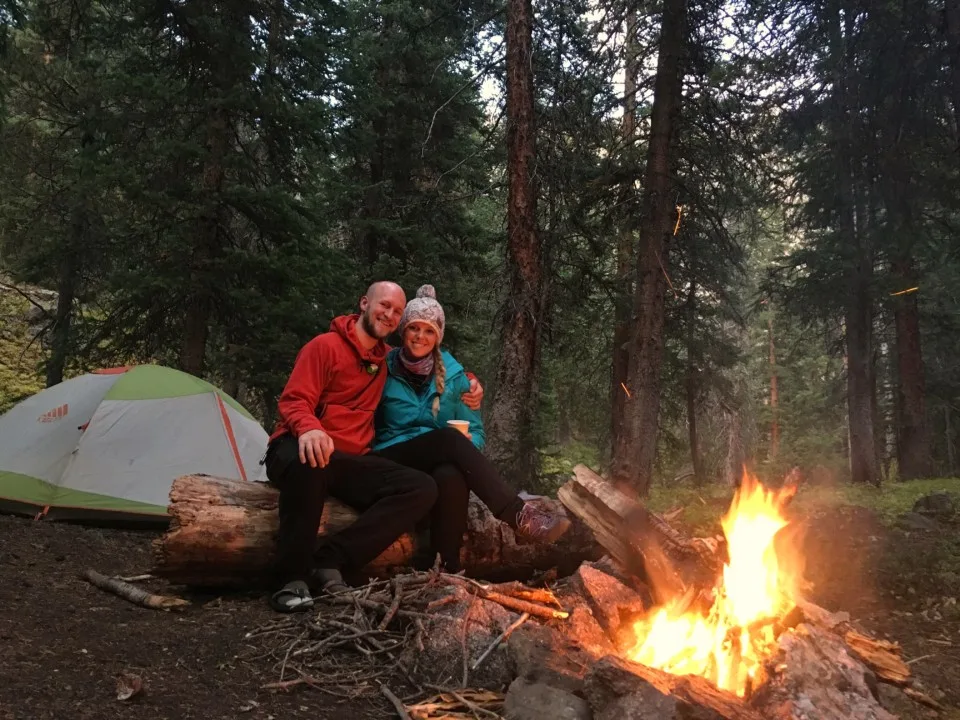
This is a challenging one to control because camping and campfires go together like, well, marshmallows, chocolate, and graham crackers. In a perfect world, LNT would probably prohibit campfires altogether because they are fundamentally very destructive. But the reasonable compromise is to encourage people to minimize their campfire impacts.
This means using already established firepits. If everyone made their own firepit, then campsites would be like an endless cemetery of spent firepits, with ash and burnt embers everywhere.
And honesty, people break this rule way too often. Many campsites will have multiple firepits because people, for whatever reason, feel like they have a “better” spot to make the firepit. So don’t be “that guy” and just use the firepit that is already there.
And if collecting firewood is prohibited, then you must bring your own firewood. However, some places do allow the collection of firewood. So just educated yourself about the location you are camping in. Local ranger stations are almost always the best source of information.
But please, please make sure you read and understand all the LNT principles.
Follow All Local Rules
Most BLM land camping is limited to 14 consecutive days in one spot. But there may be other local rules specific to a certain area to protect wildlife, or for safety reasons. The local ranger station is usually the best place to find specific rules. Or the BLM government website has lots of information. Just be informed so that you don’t get in trouble, or harm the places you visit.
Give People Space
While wild camping is usually more spread out than campgrounds, it doesn’t mean that you won’t have neighbors. People enjoy wild camping for the privacy and solitude, so the unwritten rule is to not camp right next to someone if there is more room to spread out. And usually the more popular an area is, the more crowded it will be. It’s fine to wave or say hi, but generally, leave people alone because they likely didn’t drive all the way out into the backcountry in search of new friends.
Be a Good Neighbor
Be aware of how close your neighbors are and don’t be disruptive to them. If you have a gas generator, only run it during daytime hours. And don’t have loud music or talking that extends late into the night. Use your best discretion on what’s appropriate. Unless your discretion is terrible, then maybe stay home.
3. Safety and Access When Wild Camping and Boondocking
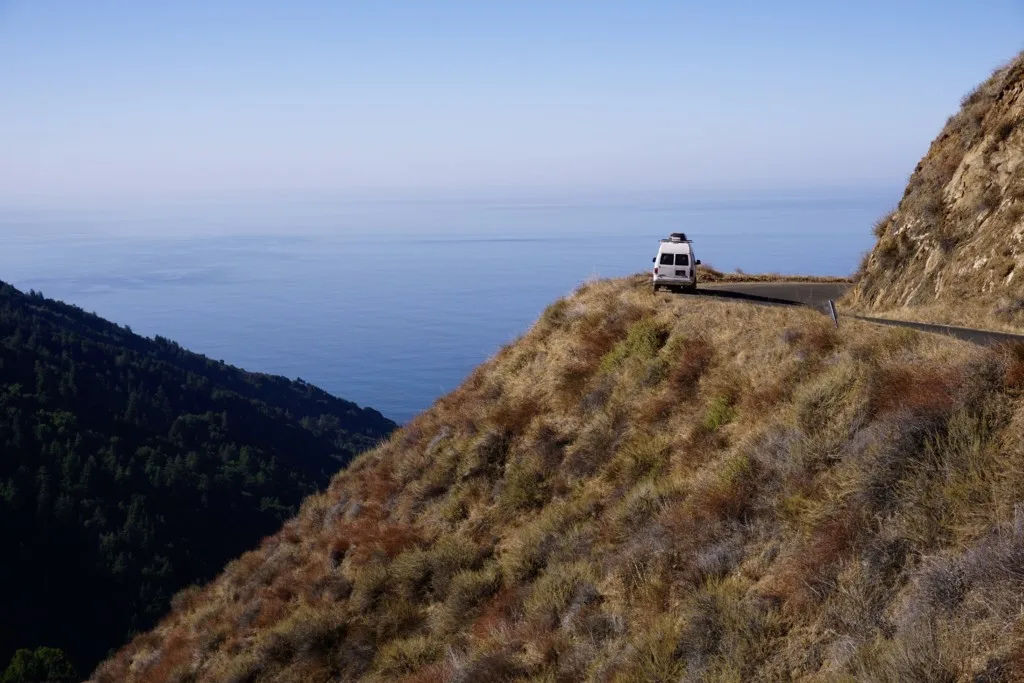
Take Charge of Your Own Safety
Lots of Wild Camping locations are out of cell service range and very far from police, fire, and medical services. Assume that you will need to handle problems without any help. This means keeping your own safety supplies like First Aid Kit, Food, Water, and other survival supplies.
Be Aware of Natural Dangers
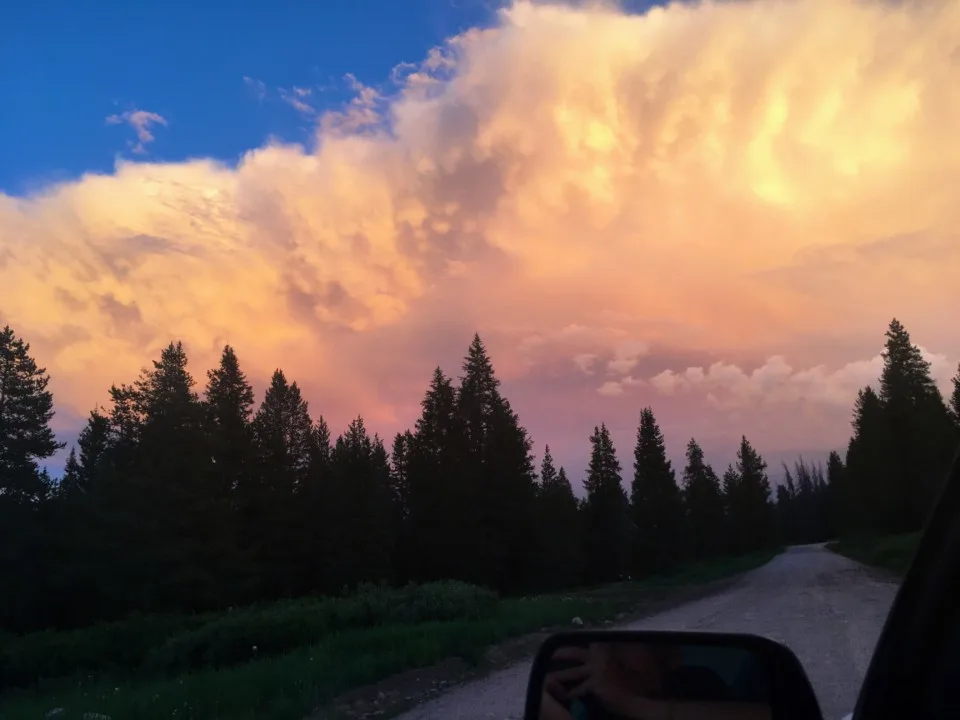
Make sure that you are not in danger of bad weather, wildfires, etc. Bad weather can make some roads really dangerous or impassable.
Tell a Friend
It’s wise to tell a friend when and where you are going when wild camping and boondocking, and when you will be back. And take note of the nearest place with cell service.
Don’t Trespass on Private Property
Sometimes the line between private property and public land isn’t clear. Do your research on acceptable places to camp. You don’t want a confrontation over trespassing.
Respect Wild Animals

Learn about the wild animals living in the area, and learn how to coexist safely in THEIR habitat. And also avoid disturbing their natural behaviors. You’ll notice how pixelated my moose photo is. This is because I stayed at a safe distance. If you’re getting crystal clear smart phone photos of wild animals, you’re WAY TOO CLOSE!
Know Your Vehicle’s Limits
Lots of wild camping and boondocking sites are accessed by unmaintained dirt roads. If you are traveling in a 50-foot RV there are lots of places that you won’t be able to get to. But a 4WD Truck or SUV might have no problem traveling rough roads, and turning around in tight spots. So just be aware of your specific vehicles limitations. Don’t be afraid to get out of the vehicle and scout ahead on foot.

Plan Your Exits and Turn-Arounds
A common mistake is not having a place to turn around. You may be able to drive a certain road, but discover that there is no place to turn your vehicle around. This one is obviously very vehicle specific. Always take note of good places to turn around in case you need to back out to the nearest turn around.
Know Your Own Limits
Just because your vehicle has 4WD doesn’t mean you’re unstoppable. So just know your limits.
Fill Up On Gas
Plan your gas fill ups by taking note of the closest places to get gas. If you get lost or want to change plans, it’s always good to be well supplied with fuel. Running out in the middle of nowhere can become a deadly situation.
4. How To Find Campsites
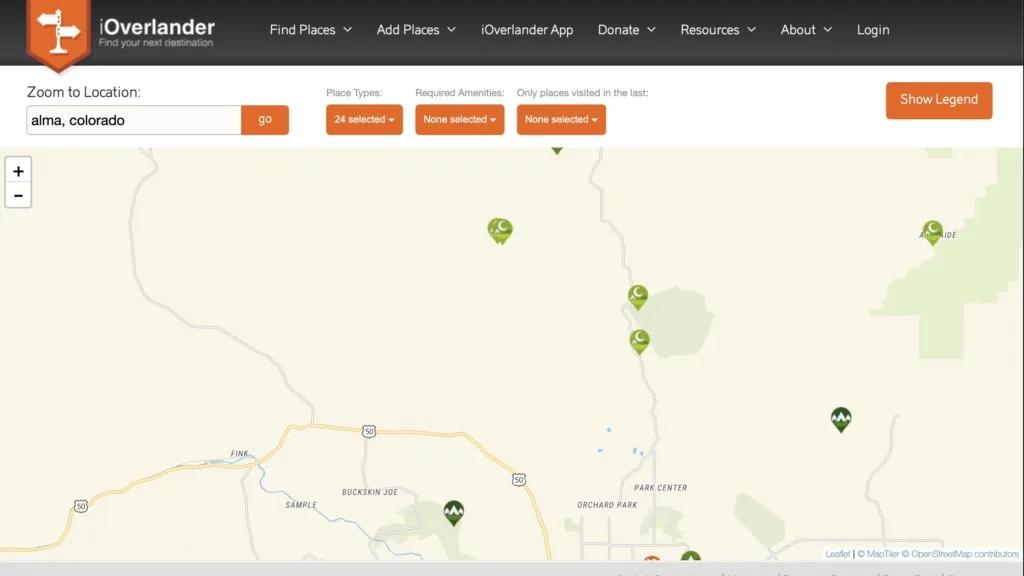
These days, most people use a variety of websites and apps to find places to wild camp. Our favorites are iOverlander and freecampsites.net. But you can also contact local ranger stations for information, or observe posted signs.
Or check out 3 great websites for finding free camping and where to park for free in vanlife that go into greater detail about finding campsites.
5. Preparation For Wild Camping & Boondocking
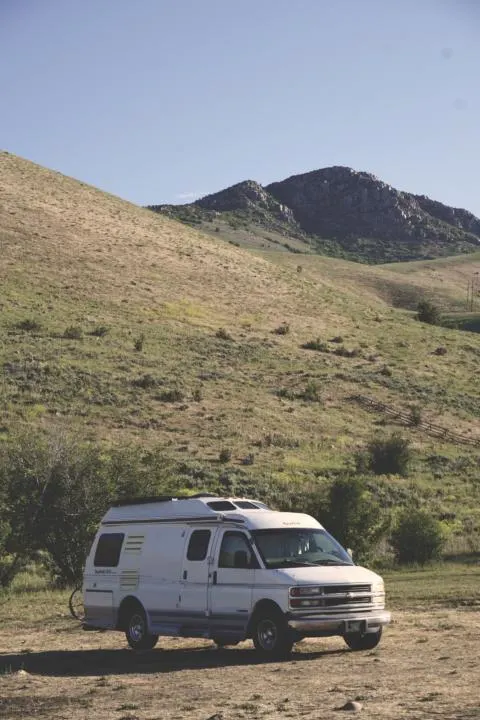
Wild camping and boondocking are all about living without any facilities. You will be reliant only on what you bring. So preparation is the key to really enjoying wild camping. Here are some tips for being well prepared.
Obviously, tent/car campers face different challenges from RVers. So let’s break them down into separate categories.
Tent Camping
Let’s start with the basics… shelter, food, and water.
Shelter
Most people pitch a tent. There are a wide range of tents for different needs, uses, and budgets. Everything from minimalist backpacking tents to car rooftop tents, and a ton in between. But basically, you just need something that can protect you from the weather and keep out bugs, etc.
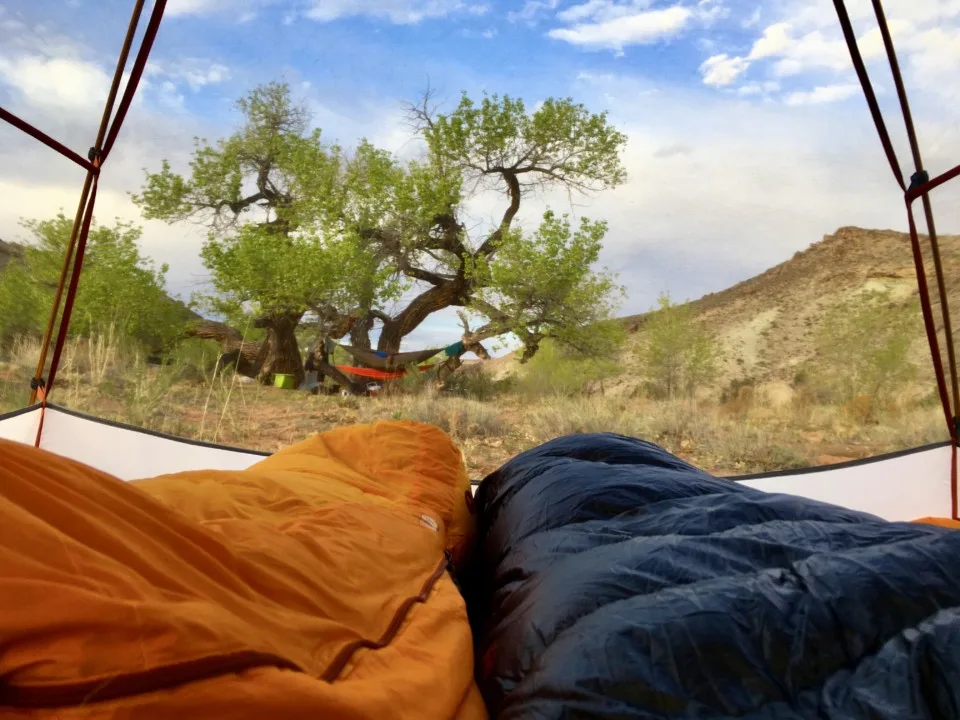
Or another option thats growing in popularity is hammock camping. You can hang a hammock between two trees with a rain fly tarp strung up above to protect from the elements. Some people much prefer being cradled in a hammock to sleeping on a firm sleeping pad.
Or if the weather is really nice, you can sleep outside under the stars with no shelter.
Included in shelter should be some kind of sleep system, by that I mean some kind of cushion to sleep on and something to keep you warm. The classic pair is a sleeping pad and a sleeping bag.
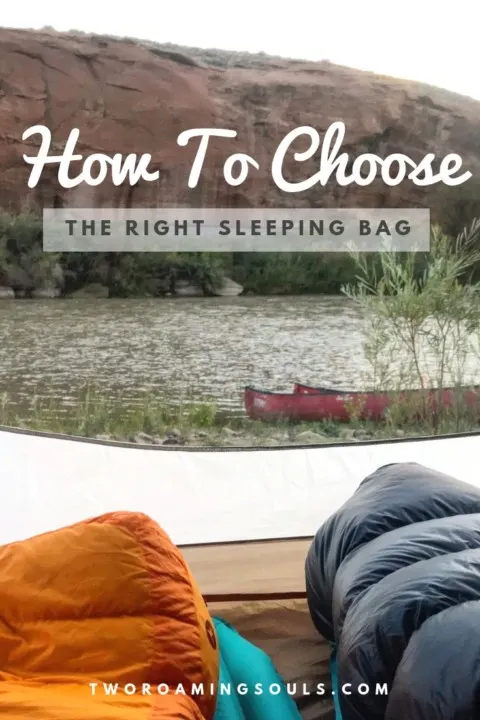
Read our guide on How To Choose The Right Sleeping Bag.
Vehicle Camping
Or, it’s becoming more and more popular for people to sleep in their cars or campervans. The huge benefit of vehicles is more protection from wind, and the convenience of not needing to set up and break down a tent. The best cars for this are usually SUVs that have folding or removable back seats, or trucks with a shell over the truck bed. But anything that provides a relatively flat platform to sleep on can work. ( Read more: Car Camping 101: A Beginner’s Guide To Sleeping In Your Car ).
Food
Just because you’re out in nature without a full kitchen doesn’t mean you are stuck with eating trail mix and Clif bars. But you will need something to cook with. Our favorite campstove is the Camp Chef Everest 2-burner. We use this stove everyday in our campervan so we can attest to it’s reliability. They tend to be on the more expensive end, but you can eat like a king with one of these. Of course there are a lot more modest options like single-burner propane/butane stoves, alcohol stoves, and of course, just cooking over the campfire.
You will probably want a compact folding table of some kind to cook your meals on while wild camping and boondocking. Though some people use the tailgate of their truck, or trunk as a table. Just be careful with dangerous fumes around/inside vehicles. Or you can always cook on the ground, but it’s just less comfortable.
Water
You can get by just bringing some gallon jugs of water, but it makes it hard to wash your hands and dishes.
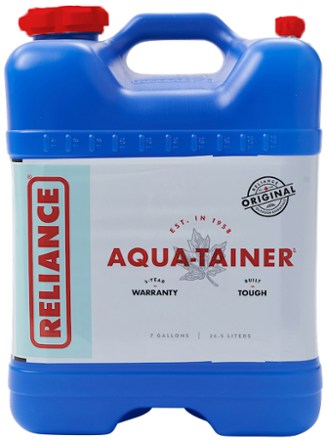
I recommend getting a water jug with a spigot. You can set it up on your table and have a more convenient spigot for washing hands/dishes, and filling up water bottles.
Or if there is a fresh water source nearby like a river, you can bring a filter and collect your own water. However, for most wild campers it’s just easier and more practical to bring all the water you need.
Then beyond that, it’s nice to bring some regular kitchen items if you plan on cooking meals. Plates, bowls, utensils, paper towels, etc. It is possible to buy a mess kit designed for camping, but if you’re just starting you can get by with normal household wares or paper plates, etc.
With just this small amount of things, you can get by for a couple of nights with no problem. And when everything you bring needs to be packed and unpacked from your car, sometimes less is more.
I would recommend just starting with the basics, and then you can add little comforts or “luxuries” as you please.
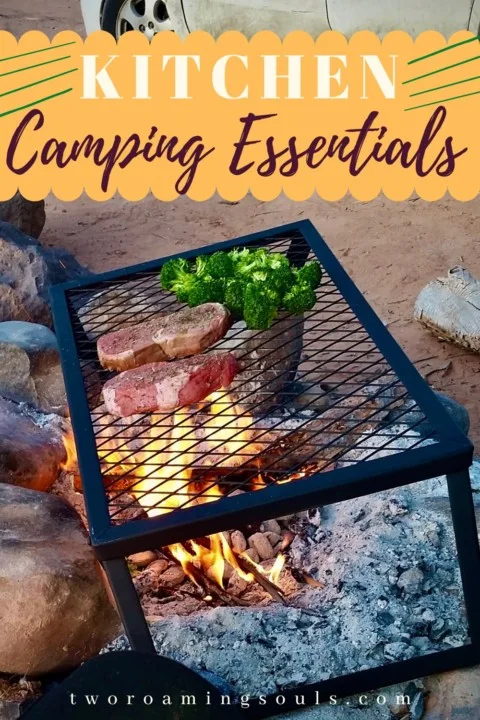
Read about all of our favorite Kitchen Camping Essentials.
RVs and Campervans
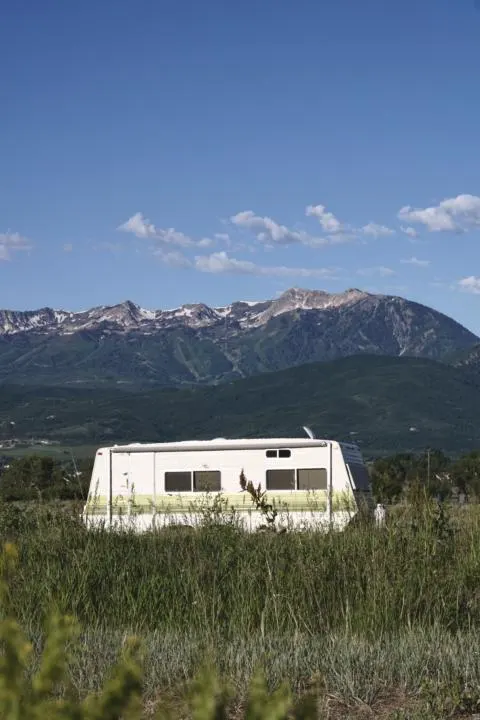
For RVs, campervans, and camper trailers, it’s a little easier because shelter, food, and water are mostly handled already. And they are usually equipped with many more comforts already. But you may need to alter your preparation if you are used to RVing with hookups (electricity, water, sewage).

CONSERVATION!!!
The name of the game is Conservation! Without hookups, you need to be more stingy with how you use your resources.
Water Supply
Your water supply is limited to the capacity of your storage tanks. Showering will use up the most water, so plan on greatly reducing your shower usage or just skip them entirely. And additionally, work on limiting the amount of water you use to wash dishes.
Waste Water
Also be mindful of your waste water storage tanks. Be sure to empty them before heading out to a boondocking site, and be mindful of how long it takes them to fill up. Luckily, some of the water-saving techniques from above will help you last longer.
Electricity
And if your RV has a gas generator or solar power then you may have access to electricity. But it might not be as abundant as when you’re connected to the grid. You will be limited by the output of your generator/solar and the total size of your battery bank. Simple things like limiting your use of lights, pumps, and appliances can really help reduce your power consumption. But especially avoid the really power-hungry things like electric heating, induction stovetops, TVs, etc.
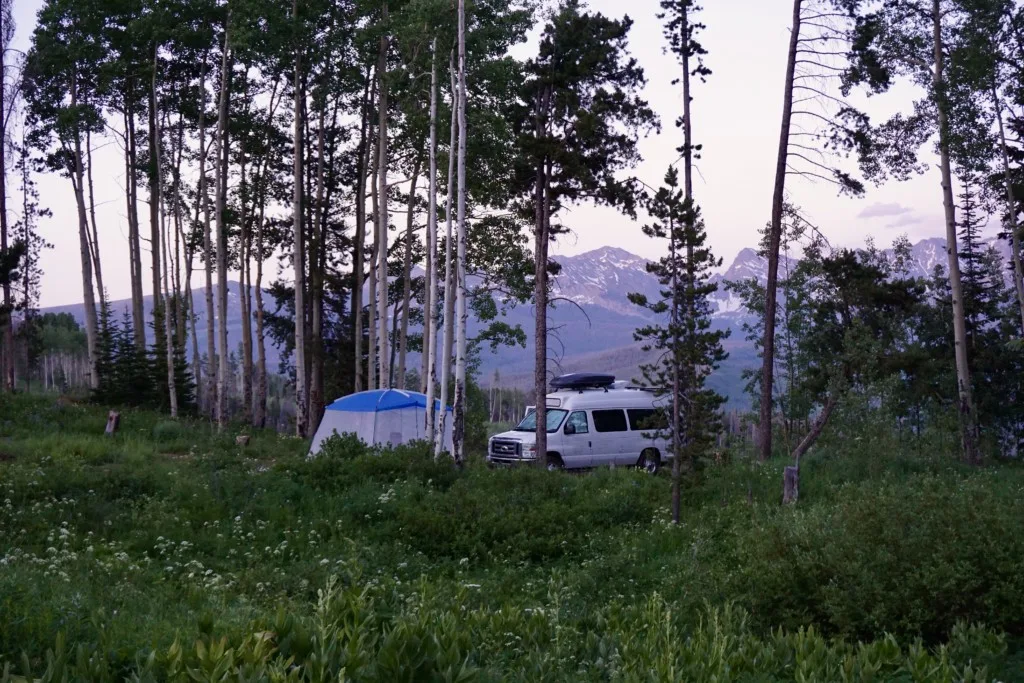
Now Get Out and Try It!
Most people who try Wild Camping or Boondocking often find it hard to go back to campgrounds. Once you experience the solitude and joy of self-reliance, going back to conventional campgrounds becomes less appealing. So plan a trip and get out there!
Informational Resources
Bureau of Land Management (BLM) Website.
Save ‘Beginner’s Guide to Wild Camping and Boondocking’ For Later
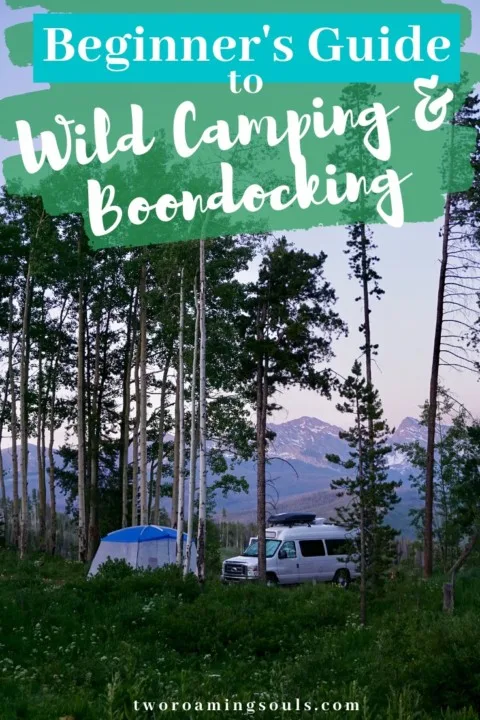
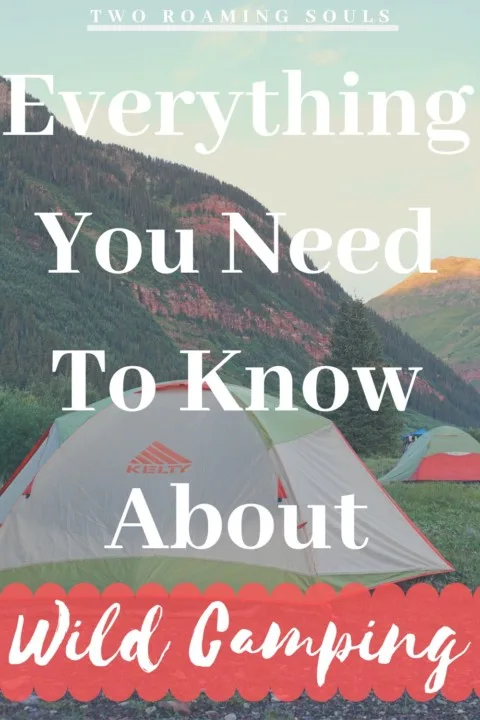
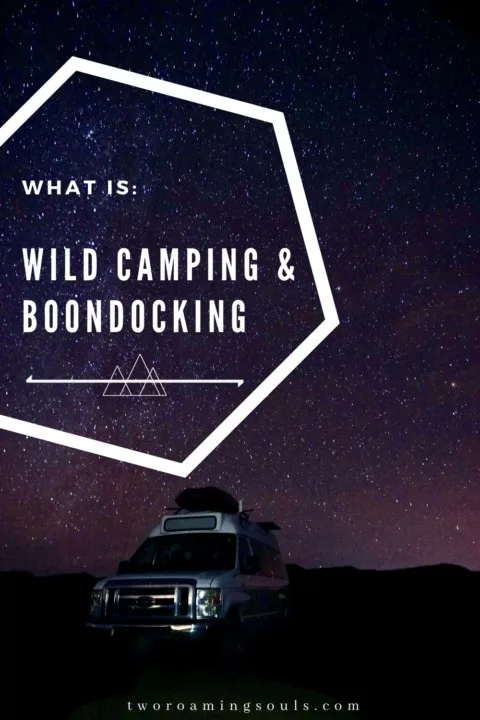

How To Get Vanlife Internet? | Best Devices For Portable Wifi - tworoamingsouls
Monday 22nd of May 2023
[…] it can make all the difference. We have one on our camper van and recommend it most people who do dispersed camping in remote […]
Why The West Is The Best Place For Vanlife In The US - tworoamingsouls
Sunday 7th of May 2023
[…] you are unfamiliar with this type of camping, you can learn the basics from our guide to dispersed camping. Also called boondocking, wild camping, primitive camping, […]
The Complete Guide To Goblin Valley State Park - tworoamingsouls
Wednesday 3rd of May 2023
[…] Limit your driving to existing roads, and camp only in previously disturbed areas. Expect no amenities and as always, Leave No Trace. If you are not familiar with dispersed, or wild camping and want to try it out, please read our tips: Beginners Guide to Wild Camping and Boondocking. […]
The Ultimate 1 Week Colorado Road Trip - tworoamingsouls
Tuesday 11th of April 2023
[…] road trip is very much designed around camping, and lots of primitive camping too (e.i. no facilities, bathrooms, water, electricity, etc). This is how we prefer to travel […]
The Ultimate Arizona Road Trip Itinerary - tworoamingsouls
Monday 10th of April 2023
[…] road trip is very much designed around camping, and lots of primitive camping too (e.i. no facilities, bathrooms, water, electricity, etc). This is how we prefer to travel […]